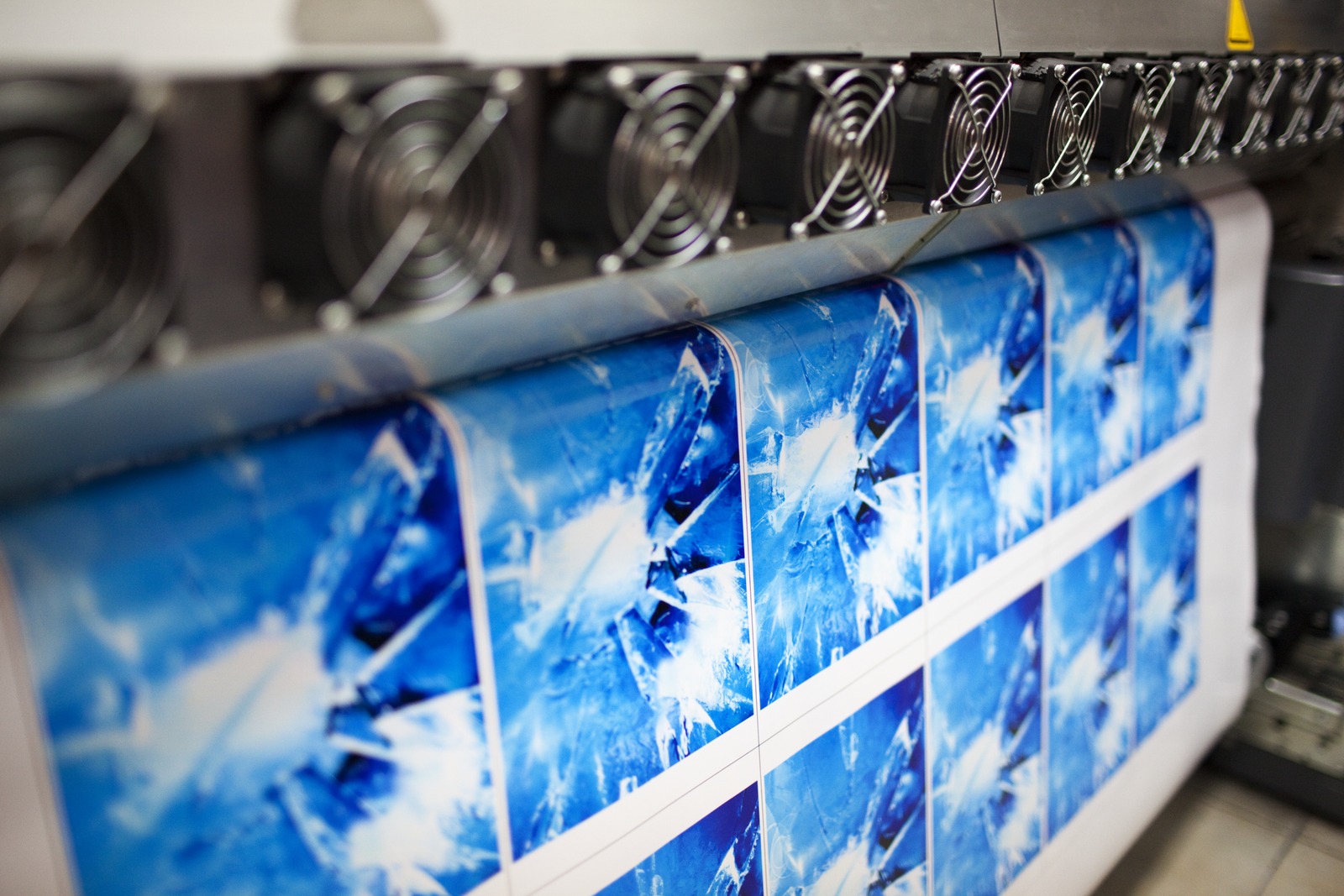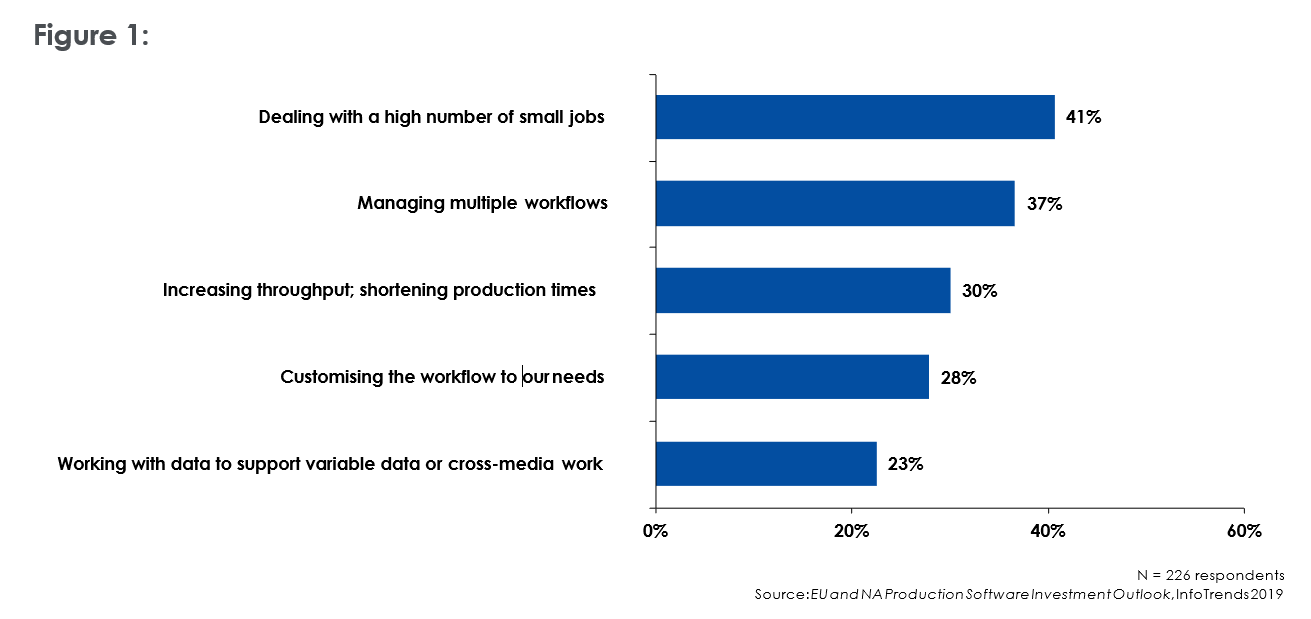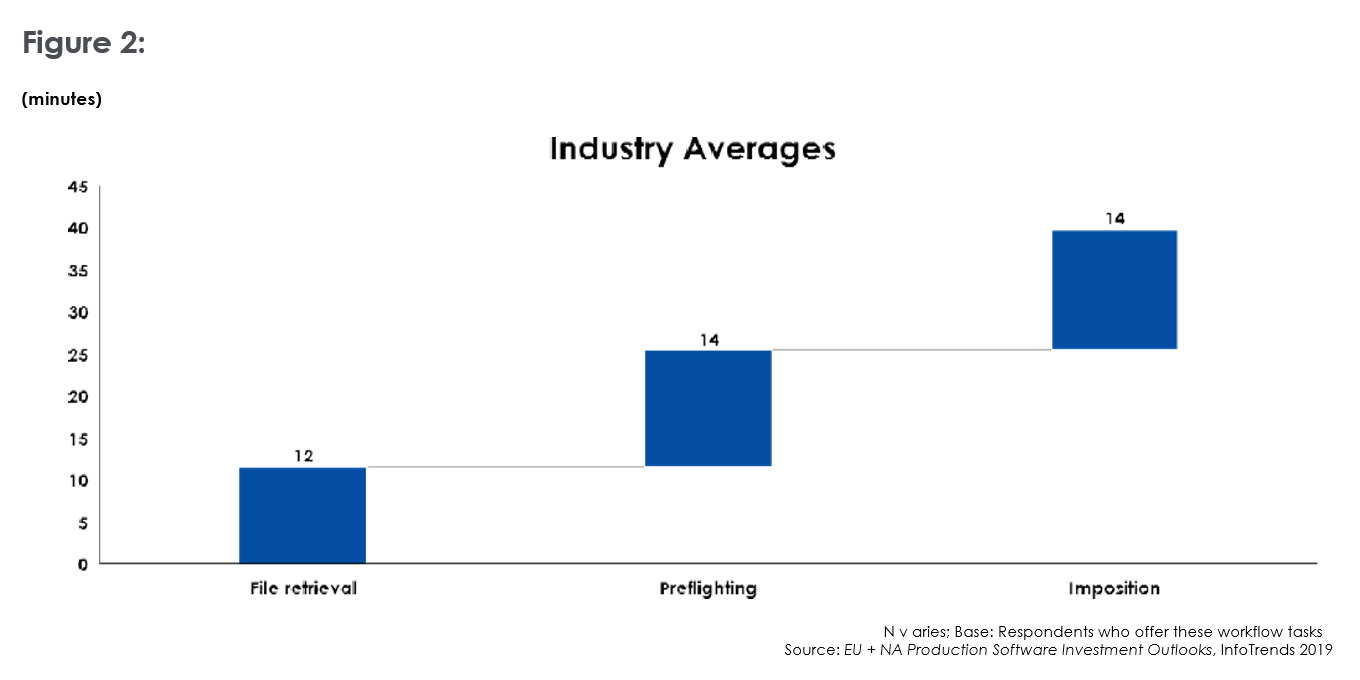
Welcome to this HP Site Flow whitepaper on commercial printing solutions. This is part of a series of whitepapers commissioned by HP in 2020 and provide a thorough independent analysis of current workflow trends and the benefits that it can bring across verticals. From saving hard cost with smart batching and optimisation to scaling to thousands of orders without falling apart, this series is designed to help any print service provider get the full picture. The whitepapers can be read in full on this site or downloaded instantly as a PDF with no pesky forms to fill out. From all of us in the HP Site Flow team, we hope you find the series useful.
Keypoint Intelligence Whitepaper: Scale to Thousands of Orders without Falling Apart
Introduction
Today’s leading commercial printers—the ones that are increasing revenues annually—are producing print jobs from a variety of sources across a diverse range of print technologies. These printers often layer contracted fulfilment work from dotcom companies on top of their own traditional job sources. Finished products can range from traditional business collateral like business cards and envelopes to photo applications like albums and prints in addition to consumer novelty items like coffee mugs.
These partnerships provide extra print volumes and a stable source of revenue, but are quite challenging for print production. Some of the challenges include:
-
Unpredictable order volumes from day-to-day from a few to thousands
-
Scalability challenges on peak volume days where tens of thousands of orders need to be produced within a tight turnaround, often 24 hours or less
-
Tracking parts of individual or multiple orders through production to later be combined for dispatch and shipping
8,317 Avg. number of print jobs per month for largest commercial printers.
While not all commercial printers are focused on this type of work, any that have digital print operations face similar challenges. In fact, recent research by Keypoint Intelligence found European and North American commercial printers averaged 3,051 jobs per month, yet the largest commercial printers are producing 8,317 per month. Additionally, over a third of respondents struggle with the increased order volumes along with customising/managing the workflows to produce the work.
Workflow Challenges

To support the increasing number of orders, commercial printers must streamline job onboarding, outsource routine tasks to automation, and unlock labour to focus on higher value tasks. The best way to accomplish these operational changes is to have a commercial printing solutions that can enable integrated and end-to-end workflow to remove human touches from most tasks, especially routine ones.
Messy Job Onboarding and Increasing Number of Jobs
In addition to the time-consuming process of adding a new customer to the workflow, onboarding jobs is equally challenging. Gone are the days of working directly with customers that provided their job specifications and content in person. Today, orders and artwork are submitted through web shops, File Transfer Protocol (FTP), online file transfer services like Box, direct link to customer systems through application programming interfaces (APIs), or through e-mail. Research consistently shows that e-mail is still the most common method for customers to submit print orders as well as (in many cases) the associated artwork and data files.
Of all the possible methods of job onboarding, e-mail is the messiest! Due to the unstructured nature of e-mail, customers tend to provide minimal information to specify job requirements and no two customers ever supply information in the same way. The chaos starts from incomplete customer data causing multiple rounds of communication between the customer, sales, customer support representatives (CSRs), and production staff.
40 minutes Avg. time spent by operators on three routine tasks that can be automated with workflow solutions.
Past job onboarding practices are no longer suitable for today’s print production needs. HP Site Flow, an end-to-end workflow automation and production management platform, allows printers to quickly onboard new customers and brands in a matter of hours and then receive job requirements and files in a structured way regardless of the customer’s preferred submission method. Submissions from APIs, FTPs, and online file transfers all funnel into one workflow for standard processing. Customers, sales, and CSRs can also use the ad-hoc job submission tool of HP Site Flow to submit one-off orders and avoid the pitfalls of e-mail. Fixing job onboarding is the first start to unlocking end-to-end workflow automation.
Automation is the Way to Scale Production
Workflow processes and tasks that worked in an analogue dominated print environment do not work well in today’s fast-paced, short-run digital print shops. Staff must be able to focus on higher value, and more profitable responsibilities—which is only possible if the routine and repetitive workflow tasks are performed in an automated workflow. Ideally, orders should be automatically imported to the workflow, preflighted to catch file issues, batched with similar jobs, imposed to save materials, and approved by the customer without operator intervention. Operators are then free to focus their attention toward exceptions and more complex orders or tasks.
Three key workflow tasks—file retrieval, preflighting, and imposition—occupy a significant portion of a production person’s time. Industry averages for these three tasks total 40 minutes according to Keypoint Intelligence research. In contrast, PSPs can fully automate these three tasks using the HP Site Flow workflow platform. While an average time savings of 40 minutes per job is a great step forward, it can also save at least €24 per job(1) in labour costs.
Industry Operator Processing Times for Workflow Tasks

Did you know that you could save over €24 per job by automating three repetitive, time-consuming tasks?
HP Site Flow automates these tasks through business rules that can be customised for each customer’s and print shop’s needs. For example, one customer may have a 24-hour turnaround with exceptions for 12-hours, while another customer’s standard is 48 hours. HP Site Flow uses the information and applies business rules for batching and imposition to meet each order’s unique service level agreement (SLA).
##Free Staff to Free Your Production Schedule
One of the most time-intensive activities for print shops is planning and scheduling work. Traditional forms of scheduling were too rigid and dependent upon capacity planning, which worked in days past when daily job counts were in the tens and not thousands.
Scheduling for digital print operations should be dynamic, intelligent, and automated where the initial plan is automatically created based on due dates/SLAs associated with each order. Each operator is provided with a daily work-to list and the schedule is adjusted based on feedback from the shop floor.
Dynamic Scheduling by HP Site Flow is based on these principals. The initial plan is created based on multiple variables: due dates/SLAs, batching of orders, and equipment availability. As orders progress through each stage of production and tracked by barcode scans, changes are reflected in the schedule. If production runs over or equipment becomes available, the HP Site Flow user dashboard immediately shows the impact to the schedule and allows operators to make the necessary adjustments. Late-stage changes to move work from one printer to another are also effortless, single-click tasks by an operator.
Another bottleneck for many printers today is the lack of integration to shipping couriers for dispatching orders. For printers without integration between their order management and shipping solutions, there are two critical risks:
- the most cost-effective shipping method may not be chosen
- the customer details and address may be keyed incorrectly
Since HP Site Flow manages all order information from the point of onboarding and can be integrated with the most popular shipping couriers, the critical shipping information passes electronically and, thus, minimising the chance for operator error.
HP Site Flow for Scalability without Falling Apart
HP Site Flow is a single, end-to-end platform for workflow automation and production management. For printers, this eliminates the challenge of integrating multiple pieces of software from multiple software vendors. The ability to onboard jobs, preflight, batch, impose, schedule, track, and ship is an automated handoff within one solution.
HP Site Flow also provides a modern software architecture. The solution is cloud-based, which brings several benefits:
-
Allows the solution to scale up or down depending on the amount of work flowing through the print shop
-
Eliminates the IT overhead of maintaining custom, in-house solutions
-
Built-in redundancy and backup of mission critical workflow configurations From an operator perspective, it is one interface to master instead of several. Since it operates through a web browser, it can be used with inexpensive computers and tablets that are ideal for viewing work-to lists and confirming jobs on the print shop floor.
From an owner and manager perspective, HP Site Flow provides dashboards to view the most important information to ensure the print operation is running smoothly. Orders can be viewed to ensure due dates/SLAs are being met. Work-in-progress orders, along with progression status, can be monitored and, if necessary, late-stage or last-minute changes to the schedule can be implemented.
Ultimately, HP Site Flow is a high-performance commercial printing solution with digital print operations. The capabilities of the platform allow printers to focus on growing their businesses secure in the knowledge that they can scale their production capabilities as more work and customers are onboarded without falling apart.
Back to top ___________________
- Calculated based on 20,352 jobs produced annually at a labour cost of €45 and a time savings of 40 minutes per job. Processing time averages for HP Site Flow are based on values provided by HP.



